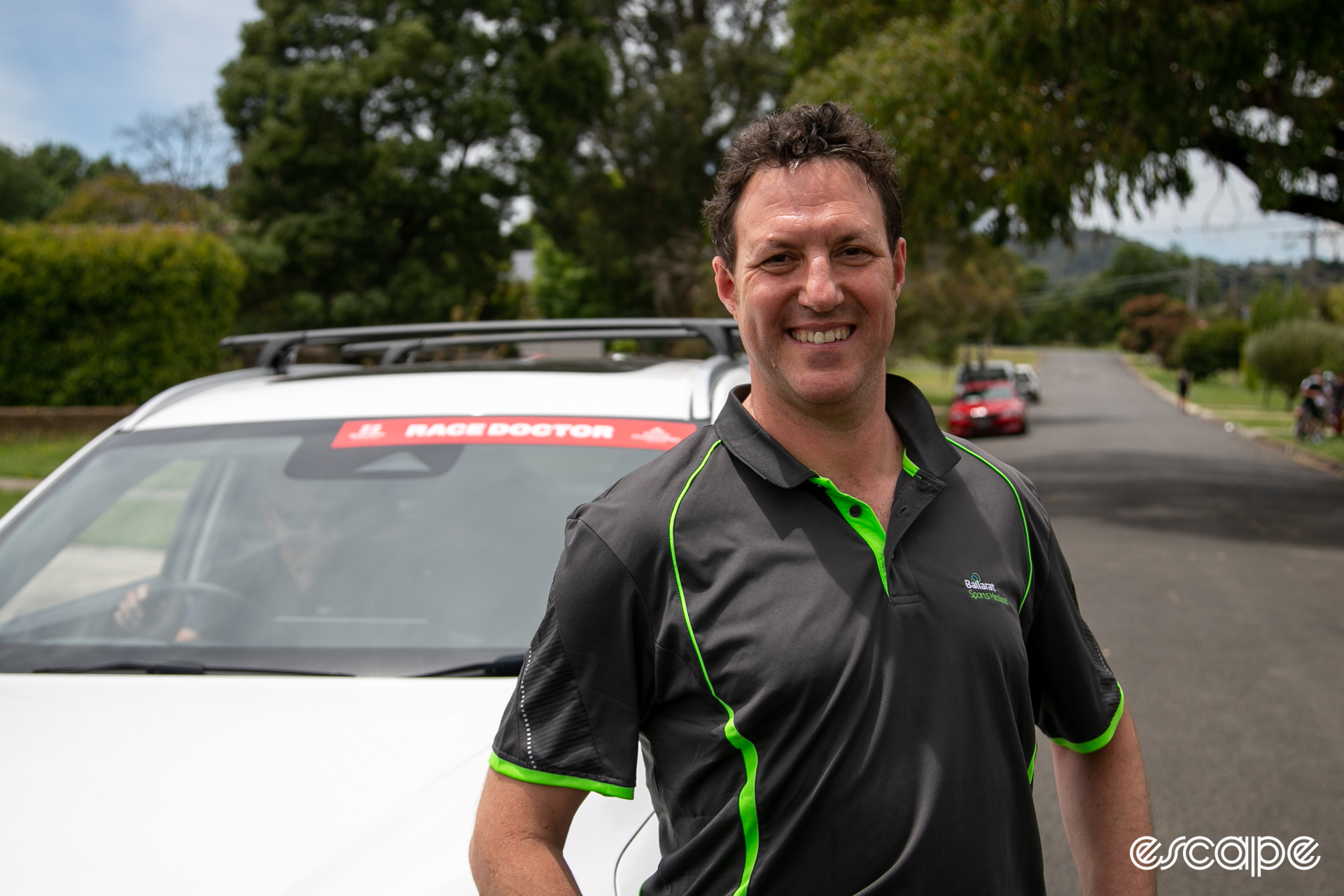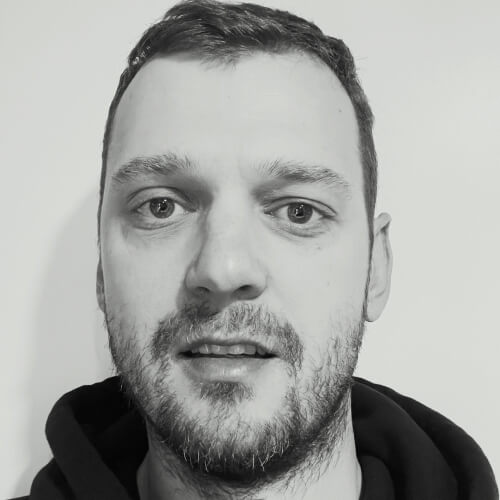Here at Escape Collective we’re fortunate enough to have members from all corners of the cycling world. Many are keen cyclists, many are members of the cycling industry, some are even WorldTour professionals. And some, like member Greg Harris, are actively involved in making big cycling events happen.
Greg is a sport and exercise medicine physician at Ballarat Sports Medicine and, more relevantly for us, he’s also the race doctor here at the Australian Road Nationals. I had the pleasure of catching up with Greg during the U23 men’s criterium in Ballarat on Friday evening, to learn what’s involved in being a race doctor.
***
Matt de Neef: How would you describe your role here at the race?
Greg Harris: I’m the race doctor, which basically means we’re here to provide immediate medical attention for the riders and for any of the event staff who might be injured.
So today, for example, here at the crits, were situated down here at the bottom corner, which is always going to be the place where things happen. It’s a fast corner, it’s slightly off-camber, today’s a beautiful day, but when it’s wet here the white lines get slippery, and if they’re going to fall, this is where they’ll fall.
So our job is to be on site and to quickly assess the riders, treat them if need be, and then if they have to go off to a hospital or elsewhere, then we arrange that.

Say a rider was to come down in front of us here, what are the steps you would go through?
Well, basically, I reckon it comes down to three things. First of all, the easy ones are when they get up straight away, and they just keep on riding and the majority of the guys are going to do that. Secondly, they get up or they’re slow to get up and they’ve got some sort of injury, but they’re not really badly injured. We can get them off course into here, patch them up, assess them, and then usually they’ll be right to go home.
The third option is if they’re really injured – then we’ve got the first aid crew here as well with their ambulance. And if we need to, then we call Ambulance Victoria, and then they can come and pick up the rider and take them off to the hospital, which is only five minutes away.
(It ended up being a mostly uneventful day for Greg and his team. Mostly. A few hours after our chat, in the final sprint of the elite men’s race, Greg and his colleagues responded to a nasty crash involving several riders and spectators.)

How did you get into this job originally?
Well, there’s a few paths into it. Essentially, here in Ballarat I’m the only sports medicine doctor west of Melbourne. There’s no one else between me and Adelaide. And so for major events like this, it makes sense that I’m the sports doctor in town – we should be looking after it.
So seven or eight years ago, I called up the organiser and said, “Hey, do you want a race doctor?” and they said “Sure.” But I’ve been involved in cycling for years. I traveled with the [Australian] under-23 road team 20 years ago, when Simon Gerrans was in the under-23 team. We went overseas with them. I’ve done some of the track cycling events in Melbourne and other bits and pieces.
Mainly, my sport’s actually motocross so I look after a lot of the Australian motocross events. This is sort of like motocross but slightly quieter.
Do you tend to deal with many crashes at Aussie Road Nationals, or is it a reasonably quiet event?
We don’t use the ‘Q-word’ *laughs*. There’s always going to be a few. I usually expect there’s going to be one per race here on the Friday [at the criteriums]. Over the weekend, maybe two or three on each of Saturday and Sunday [during the road races]. Again, thankfully, usually, they’re not too bad. But, you know, occasionally there’s some big ones and some stuff we have to get going.
Initially, I only did it with myself as the only doctor in the car and I learned fairly quickly that it’s going to be a lot easier with a second doctor so that we can pull up on the side of the road, assess the rider, and if they need more assessment or treatment, the second doctor can stay there on the side of the road with them.
The ambulance comes past and picks them both up and then takes them back down to the start/finish line for proper assessment. And then we pick up the second doctor again on the way through. That makes life a lot easier.

So for the road races, you’re in a car following the race around the circuit?
It’s the best spot to watch the race from. We’re usually third car in the convoy. And we get to see the whole race open up in front of us. And it’s just great.
And presumably you’d like to spend quite a bit of time watching the racing this weekend, rather than treating riders …
Of course. We want to have absolutely no business whatsoever. We want to sit here, watch some bike racing, enjoy the weather, not have to patch anyone up. It keeps us awake when they do [crash] but no, really we just want to see what’s going on and have some fun.
Did we do a good job with this story?

